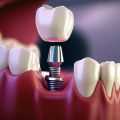4 Facts About Pelvic Examination: An Essential Guide for Women's Health

A pelvic examination is an important part of women's healthcare since it involves an in-depth examination of the female reproductive organs, such as the vulva, vagina, cervix, uterus, fallopian tubes, and ovaries. These examinations, which are performed by gynecologists, are critical for determining and preventing a variety of health issues. Here are four important facts about pelvic examinations that every woman should know:
1. Purpose and importance of pelvic examinations
Pelvic exams serve a variety of goals, the most important of which are disease identification and prevention. The major reason for pelvic examinations is to test for cervical cancer. The Pap smear, a part of the pelvic exam, collects cells from the cervix to detect precancerous or cancerous abnormalities.
Pelvic examinations are also used to diagnose sexually transmitted illnesses (STIs) such as chlamydia, gonorrhea, and human papillomavirus (HPV). Early diagnosis and treatment of these diseases are critical to avoiding consequences.
Beyond this, pelvic examinations evaluate the general health of the reproductive organs, including the detection of issues such as ovarian cysts, uterine fibroids, and endometriosis. Women with unexplained pelvic pain, irregular bleeding, or abnormal vaginal discharge may benefit from a pelvic exam to determine the root cause of these symptoms.
2. Components of a pelvic examination
A complete pelvic examination often consists of several parts. The process begins with an external examination, in which the gynecologist checks the external genitalia for abnormalities such as lesions, swelling, or symptoms of infection. The speculum examination comes after that. A speculum is put into the vagina to keep it open, allowing the doctor to examine the cervix and vaginal walls. This stage may include a Pap smear and collecting samples for STI testing.
Next is the bimanual examination. The healthcare professional puts two fingers into the vagina and presses the belly with the other hand to palpate the uterus, ovaries, and fallopian tubes. This helps estimate the size, shape, and position of these organs and identify any unusual features.
A rectovaginal exam may also be conducted, in which one finger is placed into the vagina and the other into the rectum. This offers more information about the pelvic organs and may assist in detecting problems like rectovaginal fistulas or colorectal cancer.
3. Preparation and what to expect
Knowing how to prepare for a pelvic exam and what to expect during the process can help reduce anxiety. It is better to schedule a pelvic examination while you are not on your period; however, mild bleeding may not exclude the examination. If you search "gynecologist near me," be sure that you choose an experienced and qualified specialist.
It is also critical to tell your doctor about the medications you are taking, your medical history, and any symptoms you are having. It is recommended that you avoid douching, applying vaginal creams, or having sexual intercourse for at least 24 hours before the exam, as they might all impair the accuracy of the results.
The entire procedure normally takes 10 to 20 minutes. You will be asked to undress from the waist down and lie on an examination table with your feet in stirrups. The gynecologist will explain each step and assure your comfort during the procedure. Mild pain or spotting may occur after the examination, but these symptoms usually go away soon. If a Pap smear was conducted, the results normally take a few days or a week.
4. Frequency of pelvic examinations
The frequency of pelvic examinations is determined by age, medical history, and individual risk factors. According to general guidelines, women should begin pelvic examinations at the age of 21 and continue them yearly or as suggested by their medical professional.
Women aged 21 to 29 should get a Pap smear every three years. For women aged 30 to 65, a Pap smear plus HPV testing should be performed every five years or a Pap smear alone every three years.
Women having a history of abnormal Pap smears, cervical cancer, or compromised immune systems may require more regular screenings. Women who have gone through menopause or had a hysterectomy should talk to their doctor about their specific needs.
Other articles and publications:
Articles and publications of other companies:
- +1 (646) 270-9836
- Long Island City
- grantny.com













